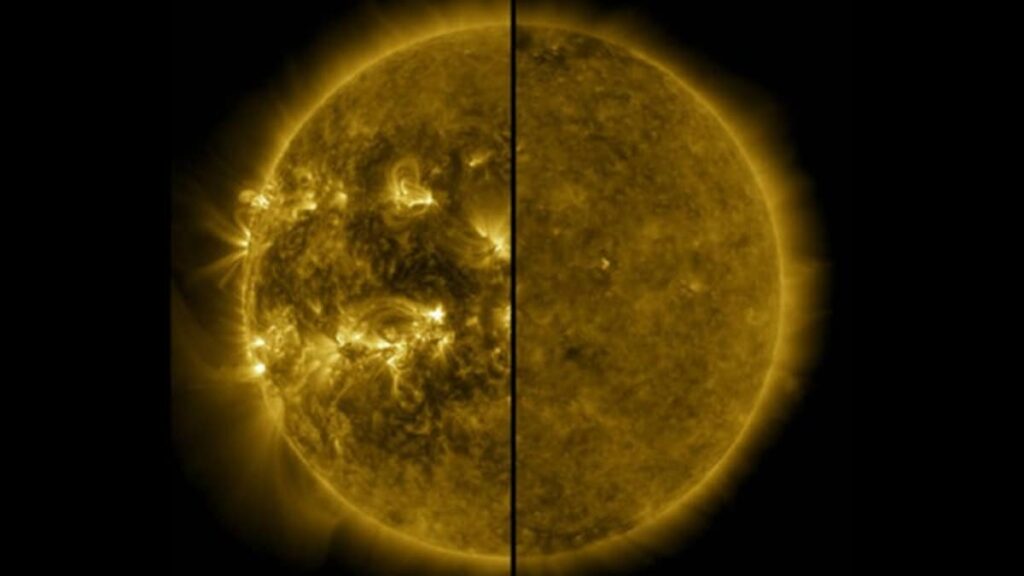Sun Reaches Solar Maximum, Bringing Increased Risk of Solar Storms and Disruptions
The Sun has entered its most active phase, known as the solar maximum, which occurs every 11 years. This period of high solar activity has significant implications for Earth and space, with increased solar storms and disruptions to communication and navigation systems.
According to Jamie Favors, Director of NASA’s Space Weather Programme, the heightened solar activity provides valuable insights into the Sun’s behavior but also poses risks to our daily lives. Solar events can disrupt satellite operations, astronauts in space, and GPS and communication systems, leading to increased errors and blackouts.
The solar maximum marks a peak in sunspot numbers, resulting in frequent solar eruptions and changes in space weather. In May 2024, NASA’s Solar Dynamics Observatory recorded one of the most intense solar storms in two decades, with an X9.0 flare, the most powerful so far in this cycle.
While the exact peak of the solar maximum phase is yet to be confirmed, current forecasts suggest this period of high activity could last another year. As Elsayed Talaat, NOAA’s Director of Space Weather Operations, pointed out, the decline in activity will signal the end of the solar maximum phase.
NASA and NOAA continue to study the Sun’s effects, with upcoming missions set to explore space weather. Notably, NASA’s Parker Solar Probe will make its closest approach to the Sun in December 2024, gathering unprecedented data on solar activity. This research is crucial for the success of space missions like NASA’s Artemis programme, which will send astronauts to explore deep space.
The solar maximum phase is a timely reminder of the importance of monitoring and understanding space weather. As we rely increasingly on technology and communication systems, it’s essential to mitigate the risks associated with solar activity. By studying the Sun’s behavior and predicting potential disruptions, scientists and policymakers can work together to ensure our daily lives remain unaffected by the Sun’s intense activity.
In the coming months, scientists will be monitoring the Sun’s activity closely, tracking solar flares, coronal mass ejections, and geomagnetic storms. The data collected during this period will provide valuable insights into the Sun’s behavior, helping us better prepare for future solar events and minimize their impact on our daily lives.
